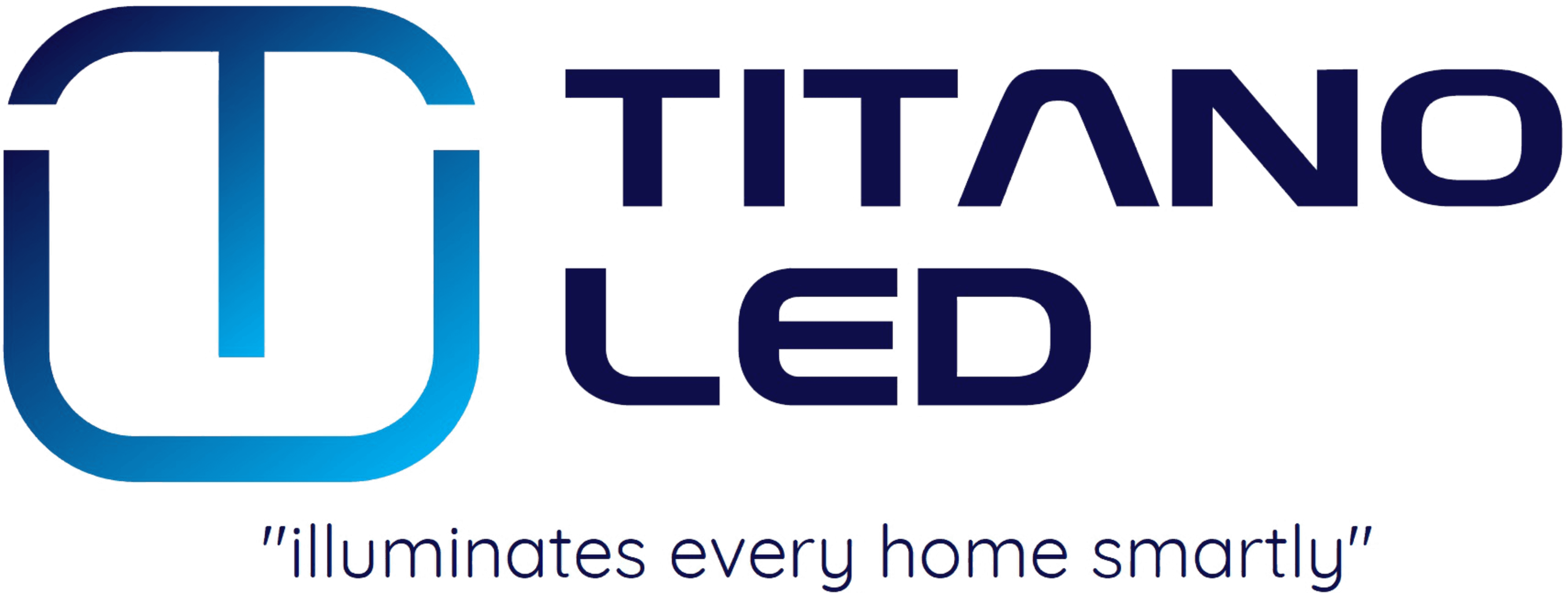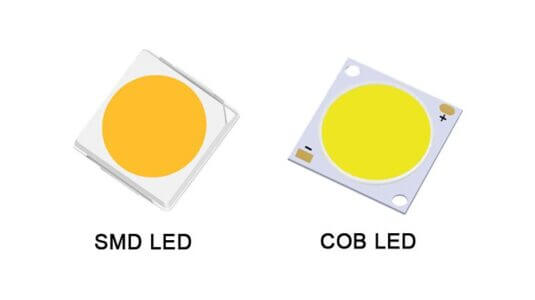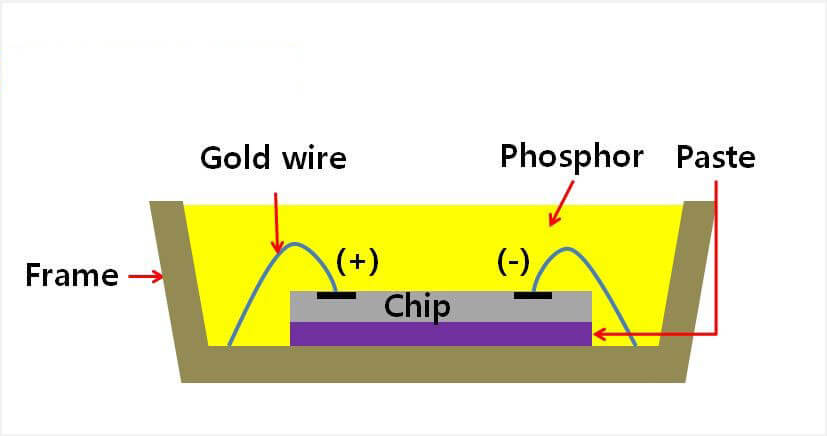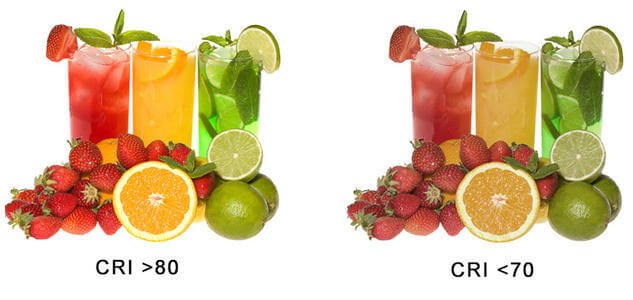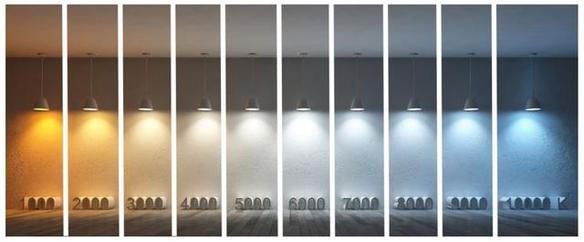Light-Emitting Diode (LED) is a semiconductor device that emits light when a current passes through it. When particles carrying electrical current (called electrons and holes) are combined within a semiconductor material, light is produced. Basically, LEDs are small lamp beads, which are easy to install into the circuit. But unlike incandescent lamps, it does not burn filaments, consumes less electricity, and does not generate a lot of heat. They are illuminated only by the movement of electrons in semiconductor materials and have a lifetime as long as standard transistors. The service life of LEDs is thousands of hours longer than that of incandescent bulbs. Because of these advantages, LEDs are one of the most popular technologies for lighting lamps. It is mainly divided into three types, DIP LED, SMD LED, COB LED.
Dual In-Line Package (DIP) LEDs
Dual-in-line package (DIP) LED, which the chip inside a hard plastic bulbous head, with 2 straight parallel connecting pins. Although some products still use this design today, its light attenuation and CRI are low, but its efficiency is far less than that of new LED chips. Today, more advanced LED chip styles are available for home, commercial, and industrial use.
Chip-on-Board (COB) LED Design
Chip-on-board (COB) refers to sticking several chips (usually 9 or more) on an aluminum substrate and packaging them together as a lighting module. This design takes up less space and provides maximum light potential. This technology eliminates the concept of brackets, no electroplating, no-reflow soldering, and no placement process, so the process is reduced by nearly one third and the cost is also saved by one third. You will see them used in loading docks, factories, warehouses, delivery areas, and other industrial applications. COB lights often appear in high-output downlights and track lights. They are also used for street lights, parking lots, and outdoor facilities that require large areas of lighting.
Surface Mounted Device (SMD) LED Chips
Surface Mounted Device (SMD) LED Chips is the next major development after DIP. Compared with traditional LEDs, the light output generated by SMD is much higher and consumes less power. Compared with DIP LED they have a smaller, flatter design, longer service life, reduced energy consumption by up to 75%, and lower maintenance costs.
Next, we will introduce SMD LED chips by timeline, 3528-3014-5050-5630-3030-2835-3535
- The size of the 3528 SMD is 3.5*2.8*1.9mm. You can usually find the 3528 chip on the 12v LED strip. It emits less heat, so it is safer to touch them than halogen lamps. As long as the LED light bar is used for minimum lighting requirements, it can be easily installed anywhere.
- The 3014 SMD is 3.0*1.4*0.8mm. The smaller size means that more LEDs are mounted on a certain length of the PCB board. This LED chip has low light decay, low thermal resistance, and good thermal conductivity.
- The size of 5050 SMD is 5.0*5.0*1.6mm, which is larger than 3528SMD. It can be used as ‘quad LEDs’ with 4 LEDs. 5050 LED chips are often used on 60 LED-per-metre strip lights, suitable for general lightings, such as corridor lighting in homes, bars, restaurants, hotels, and other places, replacing fluorescent lighting.
- The 5630 SMD is 5.6*3.0*0.9mm. Compared with 5050SMD, it has the characteristics of high brightness, uniform illumination, small light effect, and long life. It is used for commercial purposes in shopping malls, clubs, theaters, and restaurants. Other uses include architectural lighting, security and emergency lighting, backlighting, signage lights, and special events and conferences and exhibitions.
- 3030 SMD size is 3.0*3.0*0.52mm, it is a low power consumption wide light angle lamp bead. It not only produces the highest light output but also has the best flux performance. The 3030 SMD can be driven by a large current, and can effectively dissipate heat. These LED Chips can work under various environmental conditions and are suitable for industrial and commercial lighting applications. Whether XSY lighting is an indoor or outdoor lighting product, it is applied to this SMD LED.
- The size of 2835 SMD is 2.8*3.8*0.8mm, and its circuit board is the same as in 3528. You can think of 2835 as a more effective alternative to 5050-producing 20% light, but consuming less power. It is very popular in the market and is now widely used. 2835 SMD is usually used for general indoor lighting, such as high bay light, linear light, vapor proof light, etc. Indoor lighting of XSY lighting is also more inclined to use these LED chips.
- The size of 3535 SMD is 3.5*3.5*1.9mm. At present, it mainly refers to ceramic packaged high-power LEDs. It has good thermal conductivity, high-temperature resistance, strong center illumination, and is suitable for outdoor high-power products, such as floodlights, street lights, stadium lights, etc.
In general, according to our many years of experience in the production and sales of led light fixtures, only a small number of DIP LED products currently on the market will use it. Although the acceptance of COB is higher than that of DIP, the most popular is SMD technology.
What is the difference between SMD and COB LED lights?
SMD
- SMD LED chip can have up to 3 diodes on a single chip, each diode has a separate circuit. Each circuit has a cathode and an anode, leading to 2, 4, or 6 contacts in a chip.
- The chip can contain a red, green, and blue diode, you can create any color by simply adjusting the output frequency.
- A variety of sizes can carry complex design chips.
- SMD chips are known for their brightness, producing 50-100lm/w.
COB
- COB chips usually have 9 or more diodes. It also has 1 circuit and 2 contacts, but it has nothing to do with the number of diodes.
- COB LED lights cannot be used to generate color-changing bulbs or lamps, and need to be adjusted through multiple channels to create a color-changing effect.
- Since the LEDs of all lamps are concentrated in one area, greater cooling capacity is required.
Advantages of SMD compared to the COB
- Can be used to generate color-changing bulbs or lamps to accommodate chips of complex design.
- Has better heat dissipation, not as dense as COB chips, scattered but the regular arrangement can help spread the heat of the chip to the substrate.
- Despite the high efficiency of the COB LED, the efficiency of the SMD LED is higher, it produces more lumens per watt.
- It also produces a wider beam, which means that the light does not require a heat sink as large as a COB LED.
- The cost of SMD LEDs may be lower.
Factors affecting the quality of LED chips
1. Bracket
There are basically two types of brackets of LEDs on the market, PCT (high-temperature resistance) and EMC (high-temperature resistance). Generally speaking, the working temperature of fixtures used for outdoor lighting is relatively high, so the bracket needs to use PCT. If you use an EMC that is not temperature resistant in an environment with a high operating temperature, the chip will fail to light up due to the failure of fixing.
2. Glue
The role of glue cannot be underestimated. Glue plays a role in fixing and protecting. Without glue or poor quality glue, various parts cannot be connected normally.
3. Chip leads
Conductive effect: gold wire>alloy wire>copper wire. In the early days, gold wires were used for chip leads because gold has a high melting point and good ductility. However, the cost of pure gold is too high. While ensuring the conductive effect of the lead wire and reducing the cost, many suppliers have chosen to use alloy wire. However, we do not recommend the use of LED chips with copper wire, because the copper wire has poor conductivity and a lower melting point than gold.
4. Chip
The larger the size, the better the heat dissipation, the smaller the light attenuation, and the longer the life.
5. The utilization rate of the LED chip
If we apply the lamp bead and release its function to 100% ( anything is used to the limit), its life is undoubtedly greatly shortened. Therefore, when designing fixtures, we adhere to the principle of using only 60% of the LED chips, which is conducive to ensuring the quality and life of the entire fixture.
High-quality LED chip brands: Seoul, Nichia, Samsung, Osram, etc.
What can the LED chip decide?
They can determine CRI, CCT, luminous efficiency, junction temperature, lumen maintenance, color consistency, and spectral power distribution.
- What is CRI?
Color Rendering Index (CRI) stands for Color Rendering Index, which measures the perception and color of LED fixtures on objects. In other words, CRI measures the effect of LED lights replicating the sun. CRI100 represents 100% of the color rendering of the object, just like the color reduction of objects under the sun. In short, the higher CRI, the better color. The lower CRI, the worse color.
- What is CCT?
Color Temperature (CCT) is actually a measure of whether the color of the light emitted by the lamp is yellow or blue. It is measured in Kelvin units, the most common being between 2200K and 6500K. The warm light source (yellow) has a lower color temperature (2200-3000K), while the cool light source (blue) has a higher color temperature (5000-6500K).
- What is Junction Temperature?
Junction temperature refers to the temperature transferred to the substrate after the chip touches the substrate. LED efficiency will decrease as the junction temperature increases. Therefore, to ensure that the light output and quality are within the scope of the design plan, it is important to know the maximum and minimum LED junction temperatures, and to maintain the diode junction temperature within the specified range through reasonable heat dissipation. For example, the maximum ambient temperature of the lamp bead is 105°C. When designing the lamp, we will control the junction temperature to about 85°C at 45°C ambient temperature to ensure the life of the LEDs. - What is the Lumen Maintenance?
Lumen maintenance is a metric used to assess the decline in light output of LEDs that occurs over time. For LED light sources, LM-70 defines the lumen maintenance life as the elapsed operating time at which the specified percentage of the lumen depreciation or lumen maintenance is reached, expressed in hours. That is, the LED must maintain its initial lumen within the rated life 70%. For example, an LED with a lifespan of 50,000 hours means that after 50,000 hours of use, the lumen of the LED lamp is only 70% of the initial lumen. There are more ways to detect lumen maintenance, L79, L80, L90, and TM21. - What is Color Consistency?
Color consistency refers to the average amount of change in chromaticity between a set of LED chip samples that assume the same lamp. In other words, the light emitted by the same batch of lamp beads with a color temperature of 3000k should look the same. Instead of this chip looking warm, that chip looking cool. In general, the more complex the physics and chemistry of the light source, the more difficult it is to produce consistent color characteristics. - What is SPD?
The visible white light we see consists of a spectrum of various colors, with wavelengths ranging from 380nm (purple) to 760nm (red). Spectral Power Distribution (SPD) shows the radiant power of the light source at each wavelength or wavelength band in the visible spectrum.
